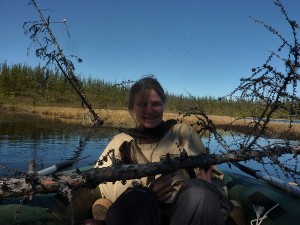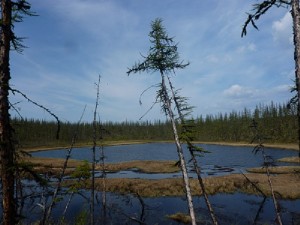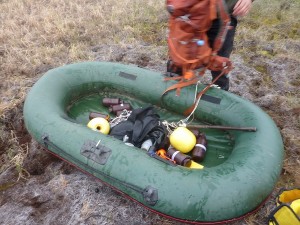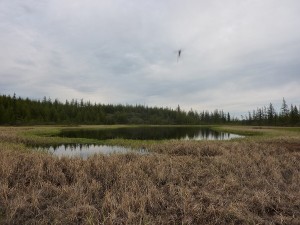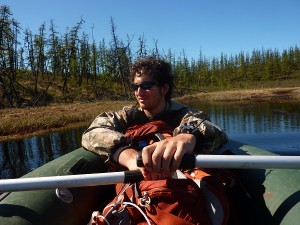Today marks our two week anniversary at the Northeast Science Station. With a little more than half our trip completed, we look at the next 10 days with strategic planning to finish our experiments, projects, and sampling trips north and south along the Kolyma River. Currently, my own work analyzing a watershed area that contains four lakes for dissolved organic carbon is ahead of schedule. I recently, finished the third lake taking bathymetry measurements, dissolved oxygen, pH, conductivity (or salinity), temperature, dissolved organic carbon samples, and CDOM (colored dissolved organic matter). The reason for my interest in the dissolved organic matter is that much of it is readily available for microbes to consume, given the opportunity. With increased warming, more organic matter may enter these lakes, so knowing the watersheds organic carbon capacity allows understanding of what is already there, how it may change, and where it will go (downstream into the main stem Kolyma and out into the ocean eventually).
Some may wonder how a small watershed area may tell you about the greater hydrologic cycle of organic carbon in the environment, since it is only representative of itself. While ideally we would measure every lake for organic carbon in every watershed, it is not feasible, so we take the next best approach, to obtain a strong understanding of carbon dynamics and their influences in a particular watershed, and then use that understanding to explain what may be happening across other similar watershed areas. This is how we can really use our knowledge to create insight into what changes similar areas may be experiencing, and how that will shape the environment with future warming. To make sure our assumptions of other similar watersheds are accurate, we want to make sure our understanding of the underlying mechanisms, such as bathymetry, horizontal and vertical lake variability, and the surrounding landscape is as complete as it can be. That is why I have devoted much of my time in Cherskiy to obtaining data at varying depths in these lakes which are all connected. From that, we increase our understanding and create a point in time where we know what these lakes contain, and increase our understanding with what we have seen in the past, and eventually in the future.
Before arriving in Cherskiy this project was mapped out, methods were created, and the main questions we wanted to ask and answer were thought of. The second half of this project begins in the field, when you find unexpected measurements, differences between lakes at different depths, and inevitably ask more questions than you answer. That is the beauty of science, especially climate science, we increase our knowledge by answering questions, but in order to answer these questions we inevitably ask more questions. That is one reason why I love what I do and why I am here. I am curious about the landscape, the environment, and the changes occurring. What we witness here from year to year inspires me to continue my pursuit of research, learning, and outreach. Just as important as the research we do, is communicating to those who do not have the opportunity to experience the beauty and awe of a changing landscape undergoing some of the most drastic changes on the planet.

